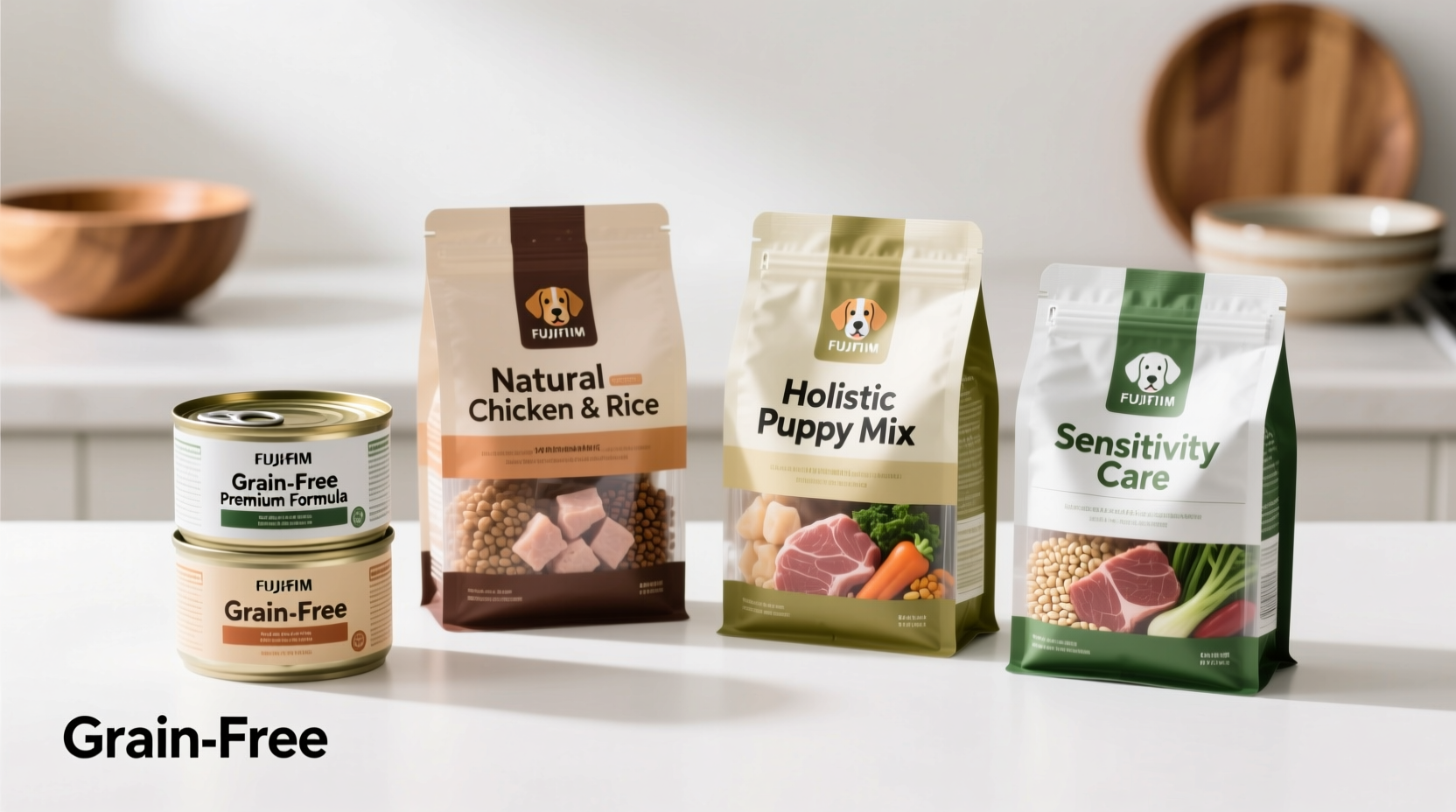Choosing the right dog food can feel overwhelming with countless options lining pet store shelves. This guide cuts through the marketing noise with science-backed criteria to help you select truly nutritious food that supports your dog's long-term health and vitality.
Understanding Your Dog's Core Nutritional Requirements
Dogs are omnivores with carnivore tendencies, requiring primarily animal-based proteins for optimal health. According to the Association of American Feed Control Officials (AAFCO), complete and balanced dog foods must contain minimum percentages of protein (18-22% for adult dogs), fat (5-8%), and essential vitamins and minerals. Unlike humans, dogs cannot synthesize certain amino acids like taurine and arginine, making animal protein sources critical.
| Nutrient | Minimum Requirement (Adult Dogs) | Primary Sources |
|---|---|---|
| Protein | 18% | Chicken, beef, fish, lamb |
| Fat | 5% | Fish oil, chicken fat, flaxseed |
| Fiber | 2.5% | Pumpkin, sweet potato, beet pulp |
| Calcium | 0.5% | Bone meal, eggshell powder |
This nutritional framework, established by AAFCO and verified through feeding trials, ensures foods provide complete nutrition. Foods labeled "complete and balanced" have undergone either formulation to meet nutrient profiles or feeding trials following AAFCO protocols—feeding trials provide stronger evidence of nutritional adequacy.
Decoding Dog Food Labels: What Really Matters
Ingredient lists reveal more than you might think. The first five ingredients constitute the majority of the recipe, so look for named animal proteins ("chicken" rather than "meat meal") as the primary components. Terms like "by-product meal" aren't inherently bad—many contain nutritious organ meats—but should follow whole meat sources.
Carbohydrates often get negative attention, but quality sources like sweet potatoes provide valuable fiber and nutrients. The key is moderation—most dogs thrive with 30-50% of calories from carbohydrates. Avoid foods where corn, wheat, or soy appear among the first three ingredients, as these common allergens offer limited nutritional value.

Evolving Science of Canine Nutrition
Dog food formulation has evolved significantly since the 1950s when most dogs ate table scraps. The development of AAFCO standards in the 1990s established minimum nutritional requirements, while recent research focuses on species-appropriate formulations. Current veterinary consensus emphasizes:
- Protein quality over quantity - Biological value matters more than percentage alone
- Fat composition - Omega-3 to omega-6 ratio should be 5:1 to 10:1
- Species-specific microbiome support - Prebiotics like FOS and MOS
- Limited ingredient diets for dogs with sensitivities
According to the Journal of Animal Science, dogs metabolize animal proteins 30% more efficiently than plant proteins, explaining why premium foods prioritize meat sources. This research, conducted through nitrogen balance studies, demonstrates why "meat first" formulations deliver superior nutrition.
Avoiding Common Dog Food Pitfalls
Marketing terms like "natural," "holistic," and "premium" have no regulatory definitions. Instead, watch for these red flags:
- Unnamed protein sources ("meat meal," "animal fat")
- Excessive fillers (corn gluten meal, brewers rice)
- Artificial preservatives (BHA, BHT, ethoxyquin)
- Artificial colors and flavors
- Vague claims like "veterinarian recommended" without evidence
The FDA's Center for Veterinary Medicine warns that some boutique, exotic ingredient, and grain-free diets may be associated with dilated cardiomyopathy in dogs. While research continues, this highlights why established formulations following AAFCO guidelines remain the safest choice for most dogs.
Life Stage and Health-Specific Considerations
Your dog's nutritional needs change dramatically throughout life. Puppies require 22-32% protein and higher fat content for growth, while senior dogs often benefit from reduced calories and added joint support. Special considerations include:
- Puppies - Look for "for growth" or "all life stages" labeling with DHA for brain development
- Active dogs - Higher fat content (8-12%) supports energy needs
- Senior dogs - Moderate protein (14-21%) with glucosamine/chondroitin
- Dogs with allergies - Novel protein sources (venison, duck) with single carbohydrate
Consult your veterinarian before making significant dietary changes, especially for dogs with medical conditions like kidney disease or diabetes where specialized formulations are necessary.
Practical Buying Guide: Making the Right Choice
Follow these steps when selecting dog food:
- Check the label - Verify "complete and balanced" statement with life stage designation
- Analyze ingredients - Ensure animal protein is first ingredient, limited fillers
- Research the company - Look for veterinary nutritionists on staff and quality control measures
- Transition gradually - Mix new food with old over 7-10 days to avoid digestive upset
- Monitor your dog - Shiney coat, healthy weight, and firm stools indicate good nutrition
Remember that price doesn't always indicate quality—some mid-range brands follow stricter quality control than premium labels. The American College of Veterinary Nutrition recommends focusing on nutritional adequacy rather than price point when selecting dog food.
Debunking Popular Dog Food Myths
Several persistent myths confuse pet owners. Let's clarify:
- "Grains are bad for dogs" - Most dogs digest grains well; grain-free diets may increase heart disease risk
- "Raw diets are more natural" - Raw foods carry bacterial risks and often lack balanced nutrition
- "By-products are low quality" - Organ meats in by-products provide essential nutrients
- "All kibble is the same" - Processing methods significantly impact nutrient availability
Peer-reviewed research published in the Journal of the American Veterinary Medical Association consistently shows that commercially prepared foods meeting AAFCO standards provide complete nutrition superior to most home-prepared diets.
When to Consult a Veterinary Nutritionist
While most dogs thrive on quality commercial foods, certain situations warrant professional guidance:
- Chronic digestive issues unresponsive to standard diets
- Multiple food allergies or sensitivities
- Specific medical conditions requiring therapeutic diets
- Home-prepared diet formulation
Board-certified veterinary nutritionists (DACVN) have completed specialized training beyond veterinary school. You can find a specialist through the American College of Veterinary Nutrition's directory. These experts can create customized nutrition plans based on your dog's specific health profile.











 浙公网安备
33010002000092号
浙公网安备
33010002000092号 浙B2-20120091-4
浙B2-20120091-4